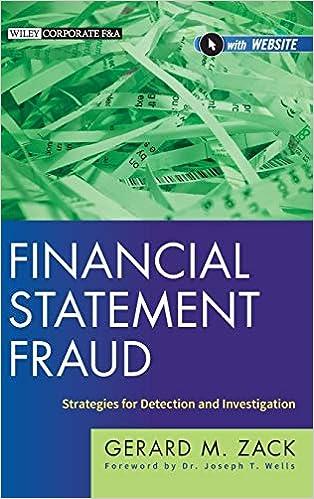Question
13. The holding period of property received in a like-kind exchange: Multiple Choice a. Includes the holding period of the old asset exchanged. b. Begins
13. The holding period of property received in a like-kind exchange:
Multiple Choice
a. Includes the holding period of the old asset exchanged.
b. Begins on the date of the exchange.
c. Begins on the date the exchange property is identified.
d. Begins up to 180 days prior to the exchange.
14. The property to be received in a like-kind exchange must be identified within:
Multiple Choice
a. 45 days after the transfer of the property relinquished in the exchange.
b. 90 days after the transfer of the property relinquished in the exchange.
c. 180 days after the transfer of the property relinquished in the exchange.
d. There is no time limit to identify the property to be received.
15. In what instances, concerning involuntary conversions, must a taxpayer file an amended tax return (Form 1040X)?
Multiple Choice
a. When the taxpayer does not buy replacement property within the replacement period.
b. When the replacement property purchased by the taxpayer costs less than the amount realized for the converted property.
c. When the entire amount of the insurance proceeds is used to purchase replacement property.
d. Both when the taxpayer does not buy replacement property within the replacement period and when the replacement property purchased by the taxpayer costs less than the amount realized for the converted property.
18. Which of the following statements is correct?
Multiple Choice
a. In part, Congress established pension plan rules to encourage individuals to save for retirement.
b. Retirement plans are generally not tax-free, only tax-deferred.
c. Individuals or companies usually establish a pension plan with a trustee.
d. All of the statements are correct.
19. Distributions from a traditional IRA:
Multiple Choice
a. Are fully taxable if the IRA was entirely funded with deductible contributions.
b. Are always fully taxable.
c. Are always nontaxable.
d. Are fully taxable if the IRA was entirely funded with nondeductible contributions.
20. Regarding a full or partial rollover of assets from one retirement plan to another retirement plan:
Multiple Choice
a. Rollovers are normally taxable to the beneficiary.
b. Rollovers are permitted only in unusual circumstances.
c. A tax-free rollover can be made from a traditional IRA to another traditional IRA.
d. A tax-free rollover can be made from a traditional IRA to a Roth IRA.
Step by Step Solution
There are 3 Steps involved in it
Step: 1

Get Instant Access to Expert-Tailored Solutions
See step-by-step solutions with expert insights and AI powered tools for academic success
Step: 2

Step: 3

Ace Your Homework with AI
Get the answers you need in no time with our AI-driven, step-by-step assistance
Get Started


